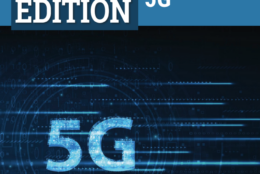SDFM The Business of Defense
-
This exclusive e-book highlights the efforts today and what’s on the horizon by civilian and the military services in rolling out 5G infrastructure and devices to improve mission effectiveness
September 10, 2021 -
Warehouse management is changing quickly as companies are now using Radio Frequency Identification (RFID) to better track inventory and gain instant insight into assets’ status and attributes.
September 09, 2021 -
This week, hosts Mark Masselli and Margaret Flinter welcome Dr. Francis Collins, Director of the National Institutes of Health, who also mapped the human genome. Dr. Collins laments the politicization of the pandemic, noting that ‘culture wars are killing people’. He urges patience on vaccine approval for families of younger children heading back to school, confident that scientific rigor will ensure vaccine safety. Dr. Collins, an avowed person of faith, urges faith-based resisters to trust the science that produced this life saving vaccine. He also discusses one of the largest protocols ever launched by the NIH to uncover the mysteries around long COVID syndrome, which is impacting an increasing number of COVID survivors.
September 09, 2021 -
Federal government agencies are seeing an increased need to make quick use of real-time data. For NASA, real-time data also extends into the far frontiers via its Deep Space Network (DSN). It’s another example of how agencies are using Apache Kafka to set their data in motion.
September 08, 2021 -
For better or worse, law enforcement officers often find themselves in the public spotlight. Professional Liability Insurance (PLI) can play a vital role in safeguarding the officers sworn to serve and protect others.
September 08, 2021 -
Government agencies and businesses are taking different approaches to warehouse management in the 21st century, one that puts emphasis on connected networks and access to the internet.
September 07, 2021 -
Host Michael Keegen is joined by Krystal Brumfield, associate administrator, Office of Government-Wide Policy, U.S. General Services Administration to discuss the mission of the agency, how they are pursuing government-wide sustainable practices and what they are doing to enhance government wide performance.
September 07, 2021 -
The review and great power competition depends on innovation, speed and the ability to buy new and emerging capabilities. The Defense Department is leading a Global Posture Review so that the military footprint is appropriately aligned with our foreign policy and national security priorities.
September 03, 2021 -
With the recent cybersecurity executive order and the critical infrastructure control systems memo, President Joe Biden’s administration is making cybersecurity a top priority. Federal News Network sat down with Jason Payne, chief technology officer for Microsoft Federal, and Steve Faehl, chief technology officer of security for Microsoft Federal, to dig deeper into these recent moves, what makes them important and how federal agencies can partner with industry to achieve their goals.
September 03, 2021 -
In this exclusive executive briefing, the following executives explore why it was critical to make meetings, and the entire hybrid work environment center around reaching the people where they are and not where you want them to be.
September 03, 2021 -
Experts from the Education Department, Department of Health and Human Services and Raytheon Intelligence and Space will explore how agencies and industry partners must partner more to create a collaborative cyber defensive posture.
September 03, 2021 -
Section 4 in the cybersecurity executive order (EO) is, in many ways, the most prescriptive of the entire EO, tackling head-on how to get vendors to improve the security of their products.
September 01, 2021 -
During this webinar Peter Sursi, the former head of talent acquisition in the Human Resources Division at the Federal Bureau of Investigation, will describe how strategies like reskilling and upskilling can transform the workforce.
September 01, 2021 -
As agencies move to the cloud in record numbers, they may be overlooking an “easy button” that will allow them to migrate workloads from on-premise environments into the cloud with the same tooling, engineering staff and resources. And the best part is most of them are already very familiar with the interface, meaning they can leverage existing skillsets to accomplish it.
September 01, 2021 -
To combat the ever-increasing cyber threats, agencies are spending more money than ever. But it’s more than just money that is needed. It’s also people and better data.
August 31, 2021















